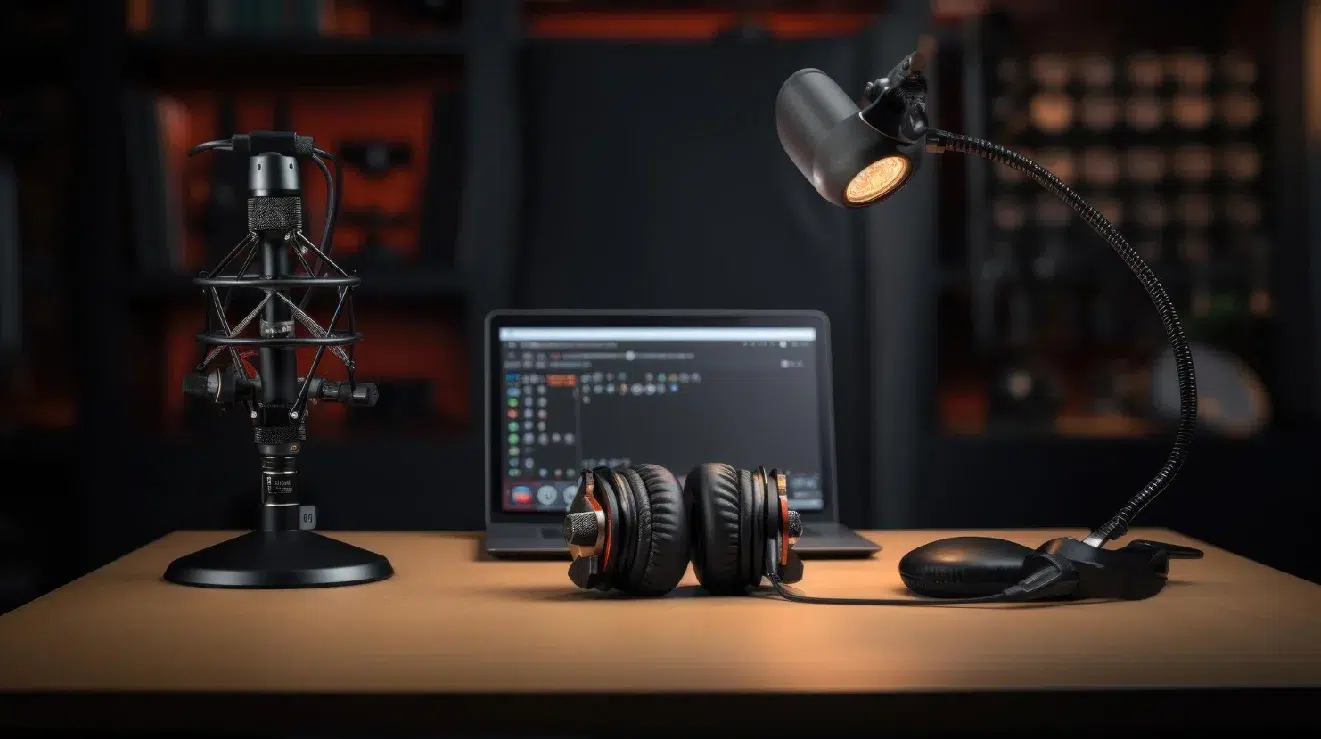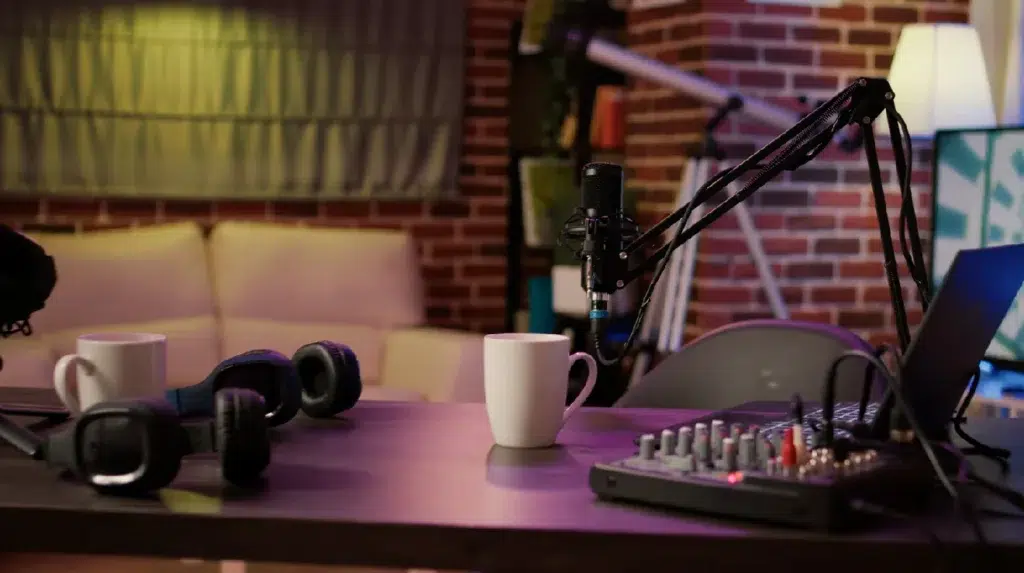How To Start A Podcast and Enhance Sales for Business Growth
Podcasting has become a globally eccentric trend. Let’s hook you to your how to start a podcast journey with this A to Z guide! We’ve got you covered with the technical and abstract concepts of podcasting.
It’s an industry that has grown in the last few years, with people tuning in to listen to their favorite shows. But what about podcasting for businesses? Businesses are seeking ways to enhance their sales and sustainable growth. Podcasts are an effective tool for business growth and help organizations of all kinds expand their consumer base. And establish their brand identity. In this blog, Tekglide will explore how incorporating podcasts into your marketing and sales strategy can be a game-changer for your company, helping you connect with your audience, and drive sales.

What Are Podcasts?
Podcasts are like interesting radio shows that you can listen to. They are only audio, so you don’t need to watch anything. It’s a bit like listening to your favorite songs, but instead, you hear people talking about a particular topic. One or more hosts chat about things they find exciting or important. It’s an easy way to learn new stuff or just enjoy interesting conversations without needing to look at a screen.
Benefits of Podcasting
Building Trust and Authority
Incorporating podcasts into your strategy is the ability to build trust and authority within your industry. Daily podcast episodes allow your business to share valuable insights, industry knowledge, and expert interviews—positioning your brand as a trusted authority.
This positions your brand as a thought leader and builds brand confidence in your audience. As trust grows, so does the converting podcast listeners into loyal customers.
Connecting with Your Audience
Podcasts are a unique way to talk to your audience more personally. For businesses, the cool thing is that they help create a group of loyal listeners. Unlike other ways of advertising, podcasts let you build a dedicated group of people who like your show and want to connect with your business.
To do this, you must make content your audience will enjoy. Think about what topics they find interesting and what content they like. When you make stuff that they find exciting, it helps you build a special connection with your listeners.
After making your podcast, you want people to find it quickly and subscribe. You can do this by using social media, emailing, and other ways to tell everyone about your podcast. Also, ensure your podcast can be found on search engines using the right keywords and an excellent cover picture. That way, more people can discover and follow your podcast.
Showcasing Your Products and Services
Podcasts are an excellent way to discuss your products or services without being pushy. Unlike regular ads that interrupt, podcast sponsorships and mentions fit in smoothly. You can talk about how your products work, share success stories, or even show how to use them through sound.
Customers who feel happy and interested will likely tell others about your stuff. This helps you get more customers, make more people aware of your brand, and create more chances to sell. Since it’s a relaxed way of sharing info, people can learn about your products without feeling pressured, and they might like what you offer!
Expanding Your Reach
Podcasting provides an opportunity to extend your reach beyond traditional marketing channels. With podcasts, your content is accessible to a global audience. This expanded reach increases brand awareness and opens new avenues for potential customers.
Getting invited as a guest on different podcasts is wise for businesses. When you’re a guest on a podcast, you get to tell people about your brand and what makes it unique.
By picking suitable podcasts and being a guest, you can talk to an audience. This can bring in new customers, help you make more sales, and make more people recognize your brand. Plus, being on podcasts with other businesses and essential people in your industry opens new opportunities.
How to Record a Podcast
If you’ve thought of establishing a podcast but need to know how to record a podcast, following these steps will help you succeed. We’ll lead you through the stages in this guide to launch a podcast and use it to boost sales.
1. Define Your Podcasting Goals
To start your podcast, you first need to identify a theme. It’s crucial that when you decide what you will discuss and who you will interview, your podcast will include interviews. Are you looking to increase brand awareness and showcase your expertise?
You need to make sure your idea has a base. For example, The School of Greatness by Lewis Howes has 1,400 episodes. It proved to be a great podcast; themes have longevity.
2. Identify Your Target Audience
You have to get to know your audience to create content that relates. Define your ideal listener – their demographics, interests, and pain points.
- How old are they?
- Where do they live?
- What do they do for work?
- Do they listen to any podcasts?
- What problems do they face?
- What do they wish they knew more about?
Customizing your podcast to your target audience’s demands increases the of a loyal and active listener base.
3. Choose Podcast Equipment
Everyone enjoys a good quality sound. No one enjoys listening to poor audio for long. Since most listeners use headphones, investing in the right podcast equipment is beneficial.
Microphones Overview
- USB Mics: Ideal for beginners, these mics are user-friendly. Open your recording software and start recording. While affordable and easy to use. Examples include Blue Yeti, JLab Talk, and Blue Snowball iCE.
- Dynamic Mics: Dynamic mics are great for many speakers. Popular choices include Shure SM7B, Electro-Voice RE20, and Heli PR 40.
- Condenser Mics: These mics need power to operate. Suited for quiet spaces. Examples are Rode NT1 and Audio-Technica AT5047.
Recording with an iPhone
You can start a podcast with an iPhone. While iPhones have built-in microphones, the audio must be more precise and more professional. Yet, apps like Spreaker and iRig Recorder for both iOS and Android can enhance your recording experience.
4. Plan Your Content and Format
A good content outline grabs the audience’s attention, including introductions for guests, interview questions, talking points, transitions, and closings. These help make the podcast go smoother.
Here is an episode structure you can use to fill out your outline:
- Hook (teaser)
- Intro
- Welcome/episode overview
- Interview
- Call to action
5. Invest in Quality Software
Choose the suitable software for recording and editing your podcast. While some use Zoom, there are various tools available for recording.
Audio Recording & Editing Software:
- Adobe Audition (PC/Mac; $20.99 per month): An editing tool with all the features you might need. Suitable for those using advanced equipment and mixers.
- Audacity (PC/Mac; free): An alternative with easy-to-use features.
- GarageBand (Mac; free): Comes pre-installed on MacBooks and is sufficient for most audio editing needs.
Recording Software:
If you plan on interviews for your podcast, consider using software that records your calls. Here are some recommended call recording tools:
- Zencastr (PC/Mac; free to start): Ideal for remote interviews, providing studio-quality recordings with separate tracks.
- Dialpad AI Meetings (Mac/iOS/Android): Free conference call software allowing participants to join via desktop or phone, with the moderator able to record.
- Callnote (Mac; free to $9.95 per year): Records conversations on various platforms like Skype, Google Hangouts, Viber, FaceTime, Facebook, GoToMeeting, and WebEx.
These tools ensure your podcast recording and editing process is seamless, whether working solo or conducting remote interviews.
6. Design Captivating Cover Art and Write a Podcast Description
When people first find your podcast, the first things they see are the visuals and the description. So, make sure the picture looks nice and shows what your podcast is about. Also, please write a good description that tells people what they can get from your podcast. Tell them why it’s great and ask them to subscribe. Make it so good that they want to click the “subscribe” button immediately!
7. Submit Your Podcast to Hosting Platforms
When you make a podcast, you can’t just put it directly on places like Apple Podcasts or Spotify. Examples of hosting platforms are Buzzsprout, Transistor, and PodBean.
It would help if you gave it to these prominent podcast places. You do this by creating something called an RSS feed. It’s like a code that tells the podcast places about your episodes. People can see the titles and descriptions and listen to the correct audio.
Some popular ones are Apple Podcasts, Stitcher, SoundCloud, YouTube, Spotify, Google Podcasts, Deezer, and Amazon Music. When you add your podcast to these places, they’ll ask for details like your podcast’s name, what it’s about, the picture, and more.
8. Promote Your Podcast
Actively promote your podcast across various channels to boost visibility. Use social media, send it in emails, and talk about it on your company’s website. Ask the people you have on your podcast and the ones listening to share the episodes. You can also do special promotions to get even more people interested. The more you talk about it, the more people will know about your podcast!

Utilize Tekglide’s Social Media Services To Boost Your Podcast
Leverage Tekglide’s Social Media Services to make your podcast more popular. We’ll help your podcast get noticed and shared on social media. With our expertise, we’ll create exciting content and promote your podcast strategically. Boost your podcasts and make them stand out online!
Conclusion
Adding podcasts to your strategy for marketing and sales will help you sell more things and grow your business. How to start a podcast works by building trust, talking to your audience in a friendly way, showing off your products, reaching more people, and getting benefits from search engines. Podcasts are a solid way to boost sales. As you start making podcasts, be steady, check how well you’re doing, and change your plan to ensure it helps your business.







